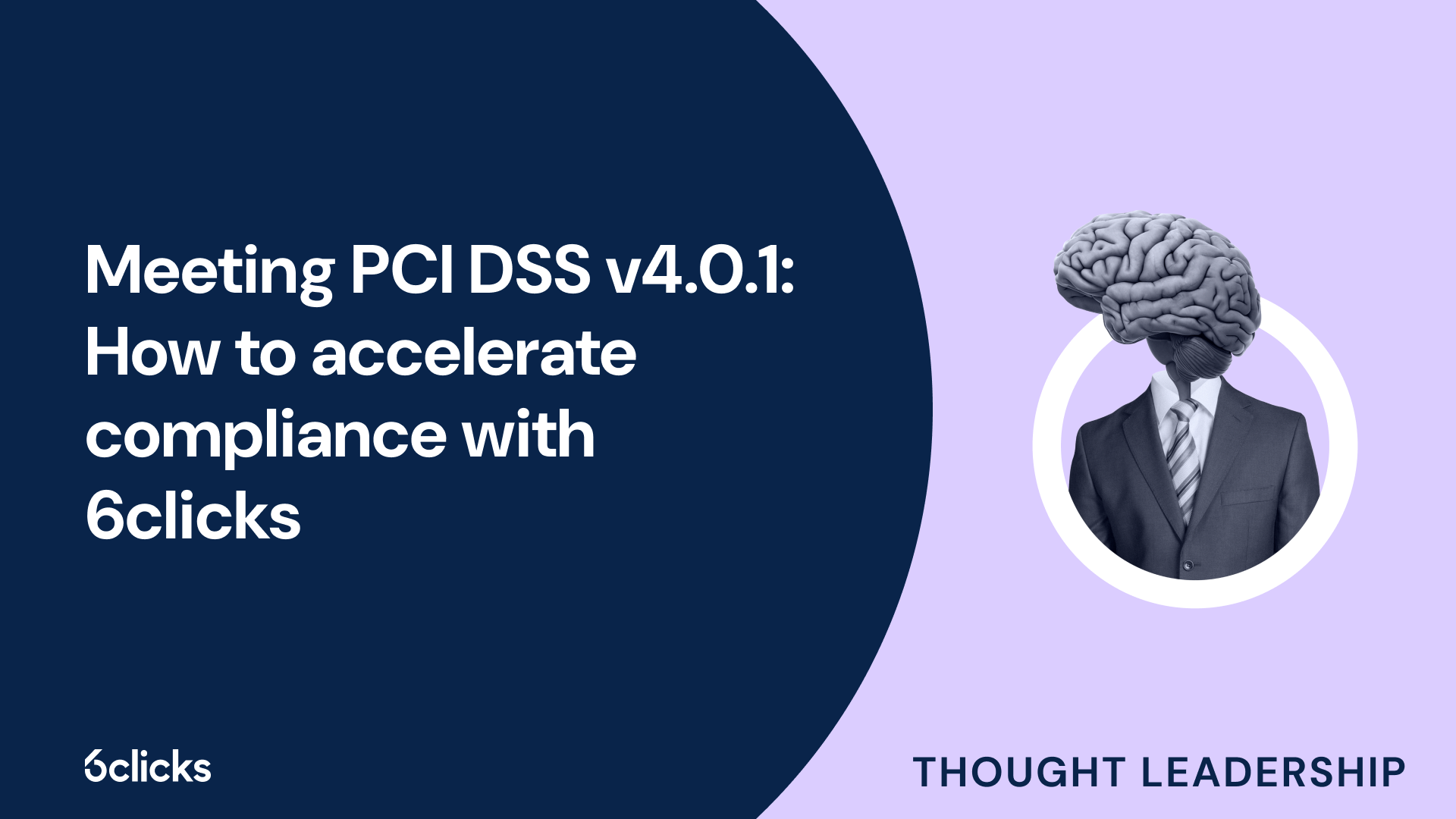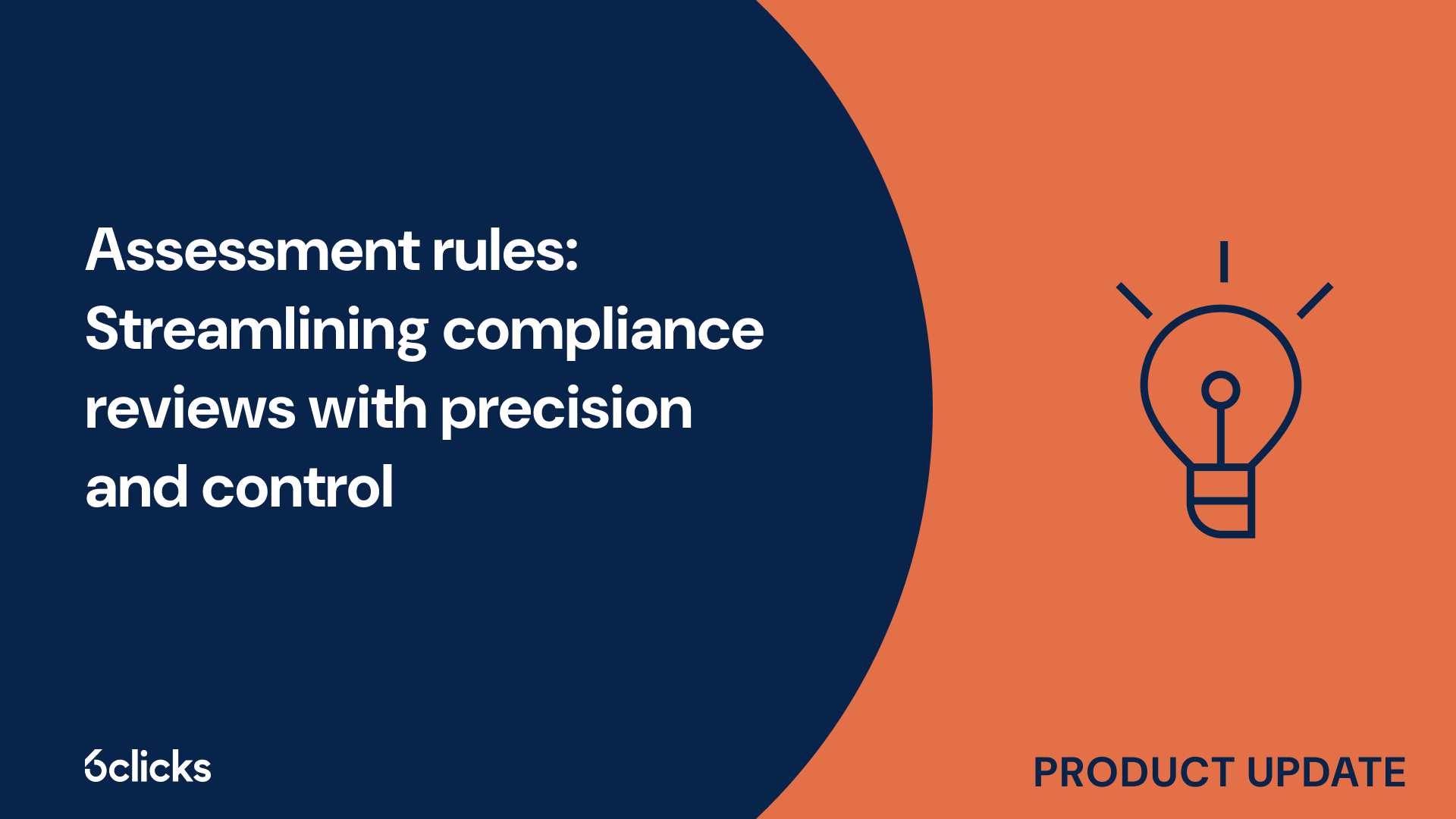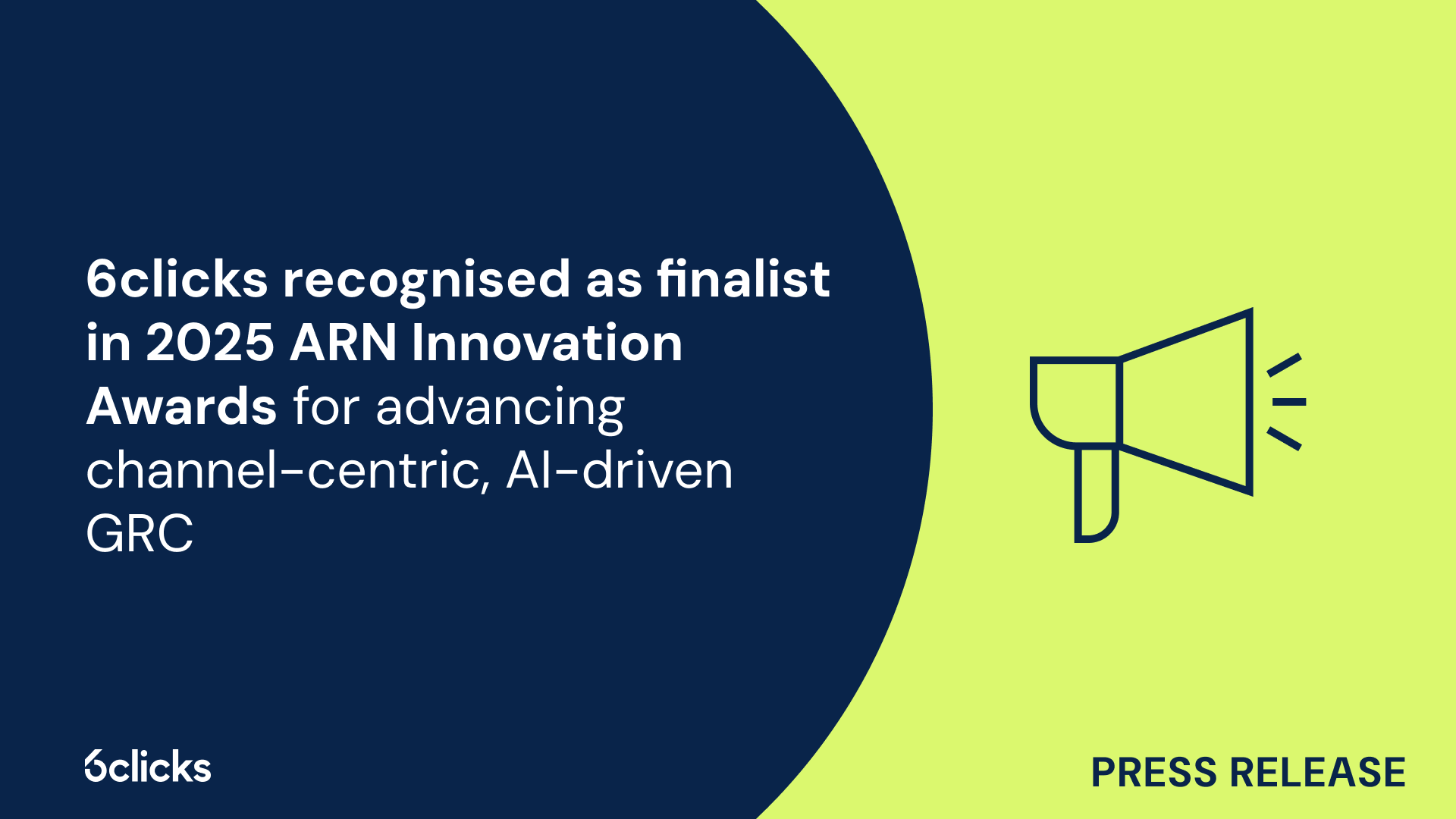The GRC buyer’s guide for 2025: Building resilience with AI-powered, federated solutions
Discover the ultimate GRC buyer's guide for 2025! Uncover how AI-powered, federated solutions transform compliance and security management for industries like government, aerospace, banking, and more. Learn about centralized control, continuous compliance, and advanced cyber GRC capabilities. Download now!
-1.png?width=200&height=249&name=Group%20193%20(1)-1.png)
The GRC buyer’s guide for 2025: Building resilience with AI-powered, federated solutions
What is HITRUST?
HITRUST, also known as the Health Information Trust Alliance, is a leading organization in the field of information security and privacy in the healthcare industry. HITRUST provides a comprehensive security framework, called the HITRUST CSF (Common Security Framework), which helps healthcare organizations and their business associates efficiently approach and manage their risk management and regulatory compliance requirements. The HITRUST CSF is a certifiable framework that consists of control domains and control requirements, covering a wide range of security processes and practices. HITRUST also offers a certification process for organizations to demonstrate their level of compliance with the framework. By adhering to the HITRUST CSF, healthcare organizations can address the unique security challenges they face, ensure the privacy and protection of sensitive health information, and enhance their overall security posture. Through this robust and scalable security framework, HITRUST empowers healthcare entities with a competitive advantage and assists them in addressing the regulatory factors specific to the industry.
What is the health information trust alliance (HITRUST)?
The Health Information Trust Alliance (HITRUST) is a non-profit organization that plays a crucial role in the healthcare industry. Its primary purpose is to champion the development and implementation of robust risk management and privacy frameworks to protect sensitive health information.
HITRUST is best known for its HITRUST Common Security Framework (CSF), which serves as a certifiable framework for healthcare organizations seeking to demonstrate their commitment to regulatory requirements and ensure regulatory compliance. The CSF provides organizations with a comprehensive set of controls and requirements that address various aspects, such as access control, risk assessment, and security processes.
To become HITRUST certified, organizations must undergo an extensive certification process conducted by an external assessor firm. This process evaluates their security posture and determines their level of compliance with the CSF's comprehensive security controls. The HITRUST certification program offers a scalable and efficient approach that can be tailored to different organization types and regulatory factors, including business associates and service providers.
Being HITRUST certified offers several key features and benefits. It provides healthcare organizations with a competitive advantage by demonstrating their commitment to security and privacy. It also helps organizations navigate the complex compliance requirements of the healthcare industry and strengthens their overall security framework. HITRUST certification validates an organization's readiness to manage security challenges and protect against security breaches. Ultimately, HITRUST and its CSF contribute to the overarching goal of ensuring comprehensive security and privacy in the healthcare industry.
Overview of HITRUST CSF
HITRUST is widely recognized in the healthcare industry for its HITRUST Common Security Framework (CSF), which provides a certifiable framework for organizations aiming to demonstrate their commitment to regulatory requirements and achieve regulatory compliance. The CSF encompasses a comprehensive set of controls and requirements that cover various aspects of security, including access control, risk assessment, and security processes. In order to obtain HITRUST certification, organizations must undergo a rigorous certification process conducted by an external assessor firm. This process evaluates the organization's security posture and assesses their level of compliance with the CSF's comprehensive security controls. The HITRUST certification program offers organizations a scalable and efficient approach that can be customized to fit different types of organizations and regulatory factors, including business associates and service providers. By adhering to the HITRUST CSF, organizations can enhance their security program and achieve a competitive advantage in the face of today's increasingly complex security challenges.
Understanding the HITRUST CSF domain structure
The HITRUST CSF (Common Security Framework) is a certifiable framework designed specifically for the healthcare industry to manage risk and address regulatory compliance requirements. One of the fundamental aspects of the CSF is its domain structure.
The domain structure organizes the framework into different control domains, which are categories of controls that address specific security and compliance requirements. These control domains encompass a wide range of areas related to privacy, risk management, and security across the healthcare industry.
Each domain consists of a set of controls that are designed to address the unique challenges and regulatory factors faced by healthcare organizations. These controls cover a comprehensive range of security processes and requirements, including access control, risk assessment, endpoint protection, mobile device security, and many others.
The specialized domains within the HITRUST CSF provide industry-specific guidance and control requirements to ensure that healthcare organizations maintain a mature and scalable security posture. They enable organizations to effectively manage their security challenges while complying with regulatory mandates.
By structuring the framework in this way, the HITRUST CSF provides a comprehensive and efficient approach to regulatory compliance and security. It allows healthcare organizations of varying sizes and types to assess their security readiness and implement the necessary controls to meet the regulatory requirements. Additionally, hiring external assessors who specialize in HITRUST CSF can help healthcare organizations ensure their security controls align with the framework accurately.
What are the domains included in HITRUST?
HITRUST CSF includes 19 assessment domains that play a crucial role in achieving comprehensive compliance and data protection. These domains cover a wide range of information security areas and help healthcare organizations effectively manage their security posture. Here are the 19 domains included in HITRUST CSF:
- Access Control: This domain focuses on ensuring appropriate access rights to systems and data.
- Asset Management: It involves identifying and managing information assets to protect their confidentiality, integrity, and availability.
- Audit Logging and Monitoring: This domain emphasizes the establishment of auditing mechanisms to detect and respond to security incidents promptly.
- Awareness and Training: It aims to ensure that staff members are adequately trained and aware of their role in maintaining data security.
- Configuration Management: It involves managing and maintaining secure system configurations to prevent unauthorized access.
- Data Protection and Privacy: This domain addresses the protection of sensitive data and compliance with privacy regulations.
- Endpoint Protection: It focuses on securing devices connected to a network to prevent unauthorized access or data breaches.
- Identity and Access Management (IAM): IAM ensures that only authorized individuals can access and modify information.
- Incident Management: This domain focuses on detecting, reporting, and responding to cybersecurity incidents.
- Information Protection Program: It emphasizes the development and implementation of policies and procedures to protect sensitive information.
- Mobile Device Security: This domain addresses the security of mobile devices and data accessed through them.
- Network Protection: It focuses on safeguarding the network infrastructure to prevent unauthorized access.
- Physical and Environmental Security: This domain involves securing physical facilities and preventing unauthorized access to sensitive areas.
- Risk Management: It aims to identify, assess, and mitigate risks to ensure the safety of sensitive data.
- Security Assessment and Testing: This domain involves regular security assessments and vulnerability testing to identify and remediate weaknesses.
- System and Communications Protection: It focuses on securing systems and network communications to prevent unauthorized disclosure or modification.
- Threat and Vulnerability Management: This domain addresses the identification, assessment, and management of security threats and vulnerabilities.
- Third-Party Assurance: It involves assessing and managing the security risks associated with third-party vendors and service providers.
- Workflow and Process Automation: This domain focuses on automating security workflows and processes to improve efficiency and reduce human error.
These domains in HITRUST CSF form a comprehensive framework that enables healthcare organizations to address critical compliance and data protection requirements effectively.
Why is it important to understand the HITRUST framework?
Understanding the HITRUST framework is crucial for organizations operating in the healthcare industry due to its many benefits. Firstly, the framework allows organizations to meet multiple security standards, ensuring compliance with regulatory requirements and best practices. By aligning with the HITRUST Common Security Framework (CSF), organizations can effectively address various security domains, such as access control, data protection, and risk management.
Secondly, the HITRUST framework helps in reducing operational expenses after a data breach. By implementing comprehensive security controls and practices, organizations can minimize the likelihood of security incidents, potentially saving significant costs associated with data breaches, recovery, and regulatory penalties.
Moreover, embracing the HITRUST framework enhances trust and dependability for service providers. Healthcare organizations can demonstrate their commitment to protecting sensitive data by achieving HITRUST CSF certification. This certification assures customers and partners of the organization's robust security posture, providing a competitive advantage in the marketplace.
Lastly, the HITRUST framework offers flexibility in designing a security ecosystem. It allows organizations to assess their unique risk profile and tailor the implementation of security controls accordingly. This adaptability ensures that healthcare organizations can address their specific security challenges while adhering to industry standards and regulations.
Examining each domain in detail
The HITRUST framework consists of a comprehensive set of control requirements organized into various domains. These domains cover a wide range of security and privacy-related areas, addressing the specific needs and challenges of the healthcare industry. Each domain focuses on different aspects of security and risk management, including access control, risk assessment, regulatory compliance, and more. Organizations undergoing the HITRUST certification process are required to assess and demonstrate their compliance with the security controls and practices outlined in each domain. This examination of each domain in detail ensures that healthcare organizations have a holistic and efficient approach to securing sensitive health information and mitigating potential risks. By thoroughly examining and implementing controls within each domain, organizations can establish a robust security posture, enhance their readiness for regulatory requirements, and bolster their overall security processes.
Administration & management control domain
The Administration & Management control domain of HITRUST encompasses key components and controls that are crucial for effective governance and overall management of an organization's security program. This domain focuses on establishing policies, procedures, and guidelines to ensure the organization's security program is implemented and maintained properly.
Key components within this domain include the creation and maintenance of an information security management program, which involves establishing executive leadership responsibilities, defining the scope of the security program, and assigning information security roles and responsibilities. It also addresses the establishment and communication of security and privacy policies, as well as the implementation of security awareness and training programs to educate employees on security best practices.
The Administration & Management control domain also emphasizes the need for organizations to conduct regular risk assessments, vulnerability management, and security testing to identify and mitigate potential risks and vulnerabilities. It underscores the importance of incident response planning and management, including the establishment of procedures for reporting, investigating, and responding to security incidents.
Effective governance and overall management of an organization's security program are critical in today's complex and evolving threat landscape. It ensures that security controls are implemented consistently, policies are followed, and resources are allocated appropriately. By having robust administration and management controls in place, organizations can maintain a strong security posture, comply with regulatory requirements, and proactively address security challenges to protect sensitive data and systems from unauthorized access and breaches.







